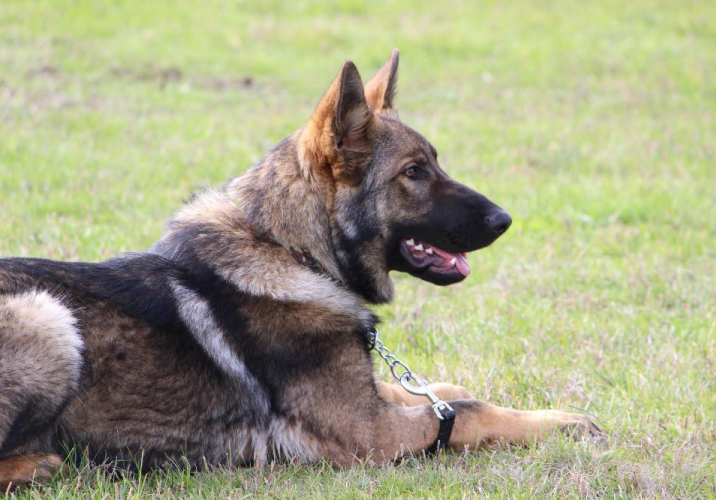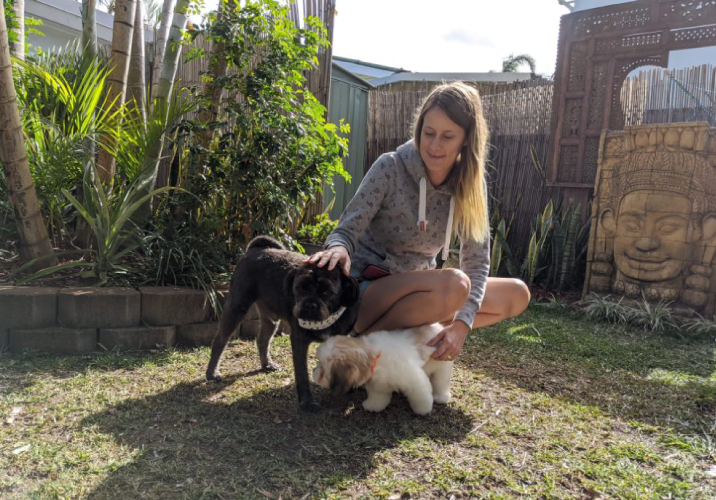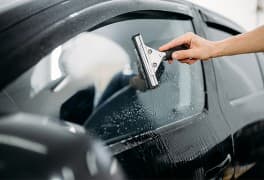
Find a local landscaper
- Inspiration /
- Outdoor projects /
- Gardening & landscaping /
- Pet friendly garden ideas
Pet friendly garden ideas
Keep your outdoor space safe for your furry friends
Pets love to spend time outdoors. The garden is a pet’s natural habitat to roam, sniff, play or dig, so take the time to make your garden a friendly and safe environment. You don’t have to say goodbye to your perfect garden, just make a few little changes. When designing a pet-friendly garden, consider your pets needs, throw in a few clever changes that will cater to them, and this will guarantee you and your pets dream garden. Here is our 8 step guide to help you achieve this.
Keep them in the yard
To keep them safe means to keep them close. Curious as they are, both cats and dogs will sooner or later try to explore the neighborhood in search of food, fun or love of their life. Keep them in the yard by putting a fence. Take care of the height and remember that for small dogs a 1.2 meter will be enough, while taller dogs should be kept inside with at least 1.5-meter high fence. Also, take care of the gaps since they are so inviting and dangerous for dogs. Put the fence deeper in the ground so that your pet cannot get caught underneath or between the boards. Here’s some options when it comes to pet friendly fencing:
- A new fence –Although this might not be an ideal solution, depending on what type of dog you have, it may be the only solution. If you have a smaller dog, a chain-link fence may not be idea. However, if you have a bigger dog, this type of fence may work.
- A higher fence –Some dogs like jumping, and they will jump right over the fence. In order to prevent this, you can add a few extra feet to your fence by buying simple bamboo or other fencing material that doesn’t have horizontal slabs.
- Visible breaks –From time to time, dogs may decide to dig their way out of the yard. Placing a concrete slab under the fence may help to prevent this. If your dog finds a way around this by digging even deeper, sometimes the only option would be to put barbwire underneath.
- Electric fences -Now, at first glance, this may seem like a pretty terrible way of teaching your dog not to escape, but in some instances, it’s the only way. The dog won’t get electrocuted from the electric fence, but it will be given a small shock. This is enough to deter it from wanting to escape the fence.

Create a bathroom area
Designate a specific spot in the garden where you will train your dog to eliminate. Make it a hidden spot behind a line of shrubbery and cover the area with some material that will be easy to clean afterward. Small pebbles are useful since it is easy to hose it down and they’re easy for dogs paws. Be persistent in training your dog and make sure that it is the only spot in the garden for that purpose. Clean it regularly and hose it at least once a day.
Rest area
Make sure to provide your pets comfortable shady areas where they can lie and rest during the hot summer days. To provide a place for a nap means less running and making less of a mess in the garden. Having their safe place in the garden, where they get the sense of ownership will make them less interested in digging through and nibbling the plants. Create an elevated area or place a big flat stone from which they can look all around ‘’their’’ territory.
Play area
Playing and running is something that pets will do anyway, whether you approve it or not. For that matter, provide the space that is suitable for playtime while redirecting their attention from your vegetables. In some cases, people like to physically separate pet area from the rest of the garden. That way they establish the boundaries while providing enough amusement for their pets. Make sure there are enough pet toys in the area as well as equipment that they can climb on, run through or jump over. To make sure they will stay in the pets area, play with them and remember to leave many toys and treats.
Have water in the garden
Almost every pet likes to play with water so indulge your furry friend some water fun. Create a water fountain at the ground level or get a kiddie (not inflatable) pool, filled with fresh water. A small pond as long it is shallow would be an amazing feature. If any of this is too much trouble, a simple hose or garden sprinklers can be of use too since dogs can spend hours playing with running water. Not to mention that it helps cooling down during the summer days.

Make paths
A bit of landscaping can go a long way in preventing pets roam through plant beds. Take a useful tip from landscape design artists from Sydney who suggests you lay paths between the beds since it will keep the animals away from the plants while it will significantly improve the look of the garden. If animals continue their walk through the plant beds even after the providing visible pathways, it means there is a gap in the planting. To make sure of it, get down and look for the gap. If it’s there, make some additional planting in the bed.
Keep the plants safe
Aside from making paths which can be helpful to a certain degree, plant your flowers in raised beds. Add some bigger plants, trees, and shrubs or try mass planting of ornamental grass or shrubbery since the animals will most likely go around them instead of biting their way through. To protect vegetables and flowers in beds, try planting a dogbane close to them. It is a plant with a strong odor that will keep the dogs away. To keep pets away from vegetables and herbs try permanent enclosure, like simple picket fence.
Contact local landscapers
Pet-friendly environment
No matter how well you fence your plants, your pets will inevitably chew them. Since some of them are toxic for animals, make sure to learn more about which plants are safe and which one should you avoid. Also, if there is water in the garden, make sure it is flowing rather than stagnant since it has to be safe for a drink as well as swim. Cut down on chemical treatments since they can cause serious damage if ingested and use natural pesticides that are safe for animals. There is plenty of safe options in the market.
Wrap up
A little planning and small effort are what it takes to adjust your garden and to create friendly surrounding for your pet. Your family and your furry companion will have a lovely retreat and safe place to spend all those lazy afternoons. Having a place for spending time outside while laughing and enjoying innocent playtime of your beloved creatures reminds of nothing but good times that are yet to happen. Keep these tips in mind and make your garden a place of joy and delight for anyone who enters.
Related posts
How much will your job cost?
The Oneflare Cost Guide Centre is your one-stop shop to help you set your budget; from smaller tasks to larger projects.



